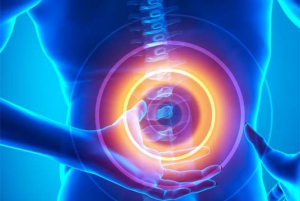New Minimally-Invasive Treatment Options for Spinal Stenosis
Related Article
Lumbar Spinal Stenosis (LSS) – mild® – Minimally Invasive Lumbar Decompression Treatment
Minimally Invasive Stenosis Treatment | The Mild® Procedure
Article Updated: 05-2020
What is Lumbar Spinal Stenosis?
Simply put, stenosis means narrowing. As we age, our spines naturally age or degenerate developing arthritic changes. These arthritic changes include disc bulging, bone spurs and ligament thickening which all contribute to the narrowing of the holes called canals or foramina which allow safe passage of our spinal cord and nerves. This spinal canal narrowing or spinal stenosis can then cause back and leg pain. Lumbar spinal stenosis affects 14 million Americans. An additional 109,000 Americans will develop symptomatic lumbar spinal stenosis each year.

What problems are associated with Lumbar Spinal Stenosis?
Lumbar spinal stenosis is quite common in people in their 60’s, 70’s and older. The symptoms are back and leg pain brought on by standing and walking and known as neurogenic claudication. Standing and walking for more than very short durations or distances becomes difficult negatively impacting on quality-of-life.
How do we diagnose Lumbar Spinal Stenosis?
The patient’s history is most helpful. First, we tend to be older when we have the condition. Additionally, the back and leg pain brought on by standing and walking is relieved by sitting or bending forward. Have you been to the supermarket and observed those people leaning on the grocery carts? The “grocery cart sign” is an indicator of Lumbar Spinal Stenosis. Once we make a clinical diagnosis, we are able to confirm the diagnosis with an MRI or CT scan.
What treatments are available for Lumbar Spinal Stenosis?
First-line treatments include physical therapy and oral medications usually nonsteroidal anti-inflammatory agents such as ibuprofen or naproxen. If these treatments are not effective, the next step is an epidural steroid injection. These injections can be repeated if they give definite and lasting benefit. In the not too distant past, major spinal surgery was the only other option. Now, we have several other minimally invasive treatment options.
What are these minimally invasive treatments for Lumbar Spinal Stenosis
There are presently two available treatments. One is mild® or minimally invasive lumbar decompression. The other is the Spherion® procedure. The mild® procedure does not require an incision and involves the removal of bone and ligament causing central lumbar spinal stenosis using special disposable tools. The Superion® procedure uses a very small incision and the placement of a small titanium device just outside of the spine but deep to the back muscles. Both procedures are performed as an outpatient and do NOT require anesthesia.
Are any of these treatments appropriate for you?
You need to be evaluated by a physician who performs both of these procedures to determine if either one is appropriate treatment for you. The doctor will review your treatment to present and make sure there is no reason you cannot have the procedure.
How long is the recovery?
You will leave the surgical center within 1-2 hours of your procedure. Due to the sedation given during the procedure, you will need to limit your activities for 24 hours. You will then be able to resume your preoperative activities.
You will be re-evaluated by the medical staff 1 to 2 weeks after the procedure. Depending upon your condition and the procedure performed, further instructions regarding activity and limitations will be determined. Sometimes, physical therapy is suggested. Within 1 to 4 weeks, you are expected to be released to activity as tolerated.

